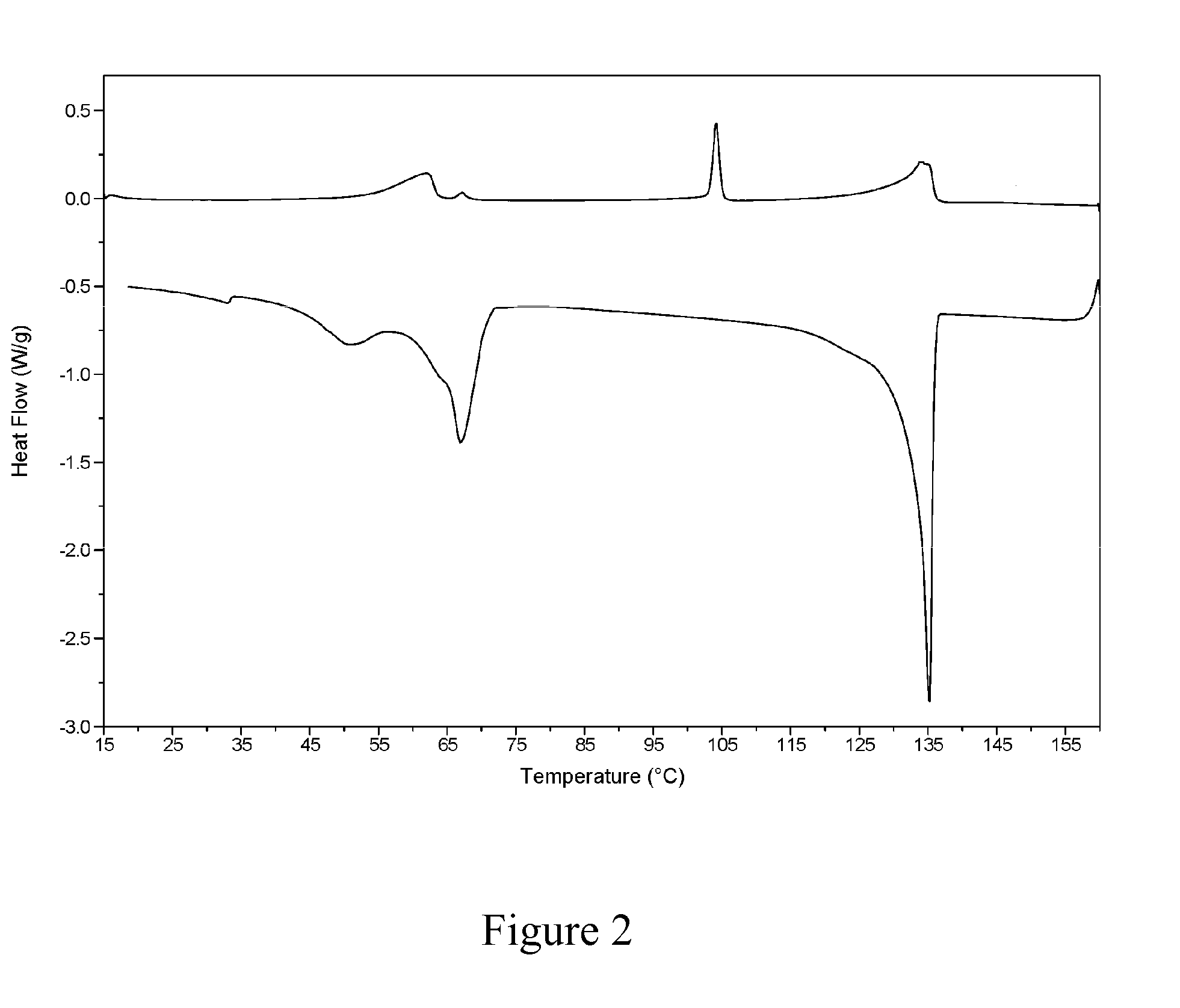Particulate fabric softening composition and method of making it
- Summary
- Abstract
- Description
- Claims
- Application Information
AI Technical Summary
Benefits of technology
Problems solved by technology
Method used
Image
Examples
examples
[0045]A melt of tris-(2-hydroxyethyl)-methylammonium tallow fatty acid diester was provided in a first stirred tank at 82° C. and a melt of Acrawax® C (mixture of ethylenediamine bisstearamide and ethylenediamine bispalmitamide) was provided in a second stirred tank at 186° C. Melt taken from the first tank was heated to 110° C. by passing it through a steam heated Kenics® static mixer, the resulting stream of heated melt was combined with a stream of melt from the second stirred tank and a stream of liquid perfume in a weight ratio of 47:50:3 and thereafter passed to a steam heated Kenics® static mixer to provide a molten composition at a temperature of 152° C. This molten composition was flaked on a Sandvik continuous belt flaker, equipped with a water cooled steel belt and a flake breaker, cooling the mixture to below 40° C. in less than 25 s, to provide flakes with a thickness of 0.25 to 1 mm and a diameter of 0.5 to 2 cm.
[0046]A sample of the flakes was heat treated for 2 h at ...
PUM
 Login to View More
Login to View More Abstract
Description
Claims
Application Information
 Login to View More
Login to View More - R&D
- Intellectual Property
- Life Sciences
- Materials
- Tech Scout
- Unparalleled Data Quality
- Higher Quality Content
- 60% Fewer Hallucinations
Browse by: Latest US Patents, China's latest patents, Technical Efficacy Thesaurus, Application Domain, Technology Topic, Popular Technical Reports.
© 2025 PatSnap. All rights reserved.Legal|Privacy policy|Modern Slavery Act Transparency Statement|Sitemap|About US| Contact US: help@patsnap.com



